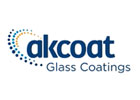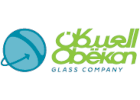AGC Group has announced that it has succeeded for the first time in a demonstration test to recycle cover glass for solar modules into float glass. With the success of this test, AGC expects that cover glass can be used to make float glass.
The test was conducted recently at the AGC Group’s Kashima plant in Japan. Approximately 5 tonnes of cover glass used in this test was refined and supplied using the low-temperature thermal decomposition technology of Tokuyama Corporation.
See also: Guardian Glass to run float process in UK using hydrogen from Ryze Hydrogen
The service life of solar panels is estimated at 20-30 years, and hundreds of thousands of tonnes of panels are expected to be disposed of annually starting in the late 2030s. Cover glass accounts for approximately 60 per cent of the total weight and there are concerns about the serious environmental impact of disposing of it in landfills as industrial waste.
Reduced demand for raw materials
Recycling cover glass into float glass has been challenging due to the presence of components that enhance glass transmission. With the success of this test, it is expected that float glass, which has a high production volume, will serve as a suitable outlet for the horizontal recycling of cover glass.
Also interesting: Production of solar glass without natural gas
AGC is actively working to conserve (for every ton of recycled raw cullet used, 1.2 tonnes of raw materials derived from natural resources are expected to be conserved) raw materials derived from natural resources, such as silica sand and soda ash, and to reduce greenhouse gas emissions in its production processes through recycling initiatives (by replacing raw materials derived from natural resources with raw cullet, the thermal energy required for melting can be reduced, resulting in an expected reduction of 0.5 to 0.7 tonnes of CO2 emissions per ton of glass, from raw material sourcing to production).


























